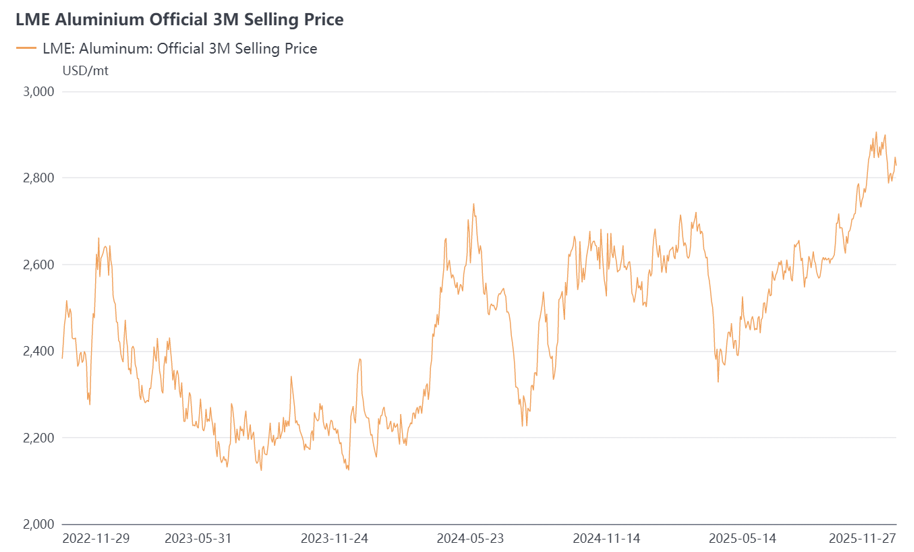






【SMM Analysis】LME Aluminium Prices Hit a Three-Year High in 2025 – Overseas Views on 2026 Outlook
In 2025, LME aluminium prices showed a volatile upward trend. From the beginning of the year to mid-March, prices remained relatively stable, before retreating to around USD 2,400/tonne in late March. After April, the market gradually stabilized and edged higher, until a new round of increases began in late October. By November, aluminium prices were fluctuating in the USD 2,800-2,900/tonne range, marking the highest level since the surge triggered by the Russia–Ukraine conflict in 2022.

As prices continued to rise, demand in several global markets, especially Southeast Asia and India, fell short of expectations even outside traditional off-season periods. Rising prices for aluminium, scrap, and related products suppressed end-user consumption, leaving upstream, midstream, and downstream players caught in a dilemma of “hard to buy, hard to sell.” Against this backdrop, and with the EU’s Carbon Border Adjustment Mechanism (CBAM) set to take effect in 2026, market attention on the trajectory of LME aluminium prices in 2026 has intensified.
According to reports from multiple overseas institutions and SMM research, the main international perspectives on aluminium’s structural outlook can be summarized as follows:
Summary & Outlook: Finding New Balance Amid Uncertainty
The 2025 aluminium price trajectory has already set the tonne for 2026: high volatility and heightened attention. The aluminium market is at a complex turning point. On one hand, geopolitics, energy transition, and trade policies are reshaping cost structures and supply chains. On the other, strong “green demand” and the reality of supply ceilings form the core contradiction driving price swings.
Looking ahead to 2026, aluminium prices may stage a “breakthrough and return” scenario. In the short term, structural supply bottlenecks and policy uncertainty could push prices toward the USD 3,000/tonne psychological level. However, market mechanisms will eventually take hold, and the gradual release of new capacity in Indonesia and elsewhere is expected to rebalance supply. SMM forecasts a “high first, then lower” pattern, with prices ultimately finding equilibrium in the USD 2,700–2,800/tonne range.
For overseas enterprises, the challenge lies not only in predicting prices but in adapting to an aluminium industry fundamentally reshaped by energy transition and new trade regulations.
For queries, please contact Lemon Zhao at lemonzhao@smm.cn
For more information on how to access our research reports, please email service.en@smm.cn